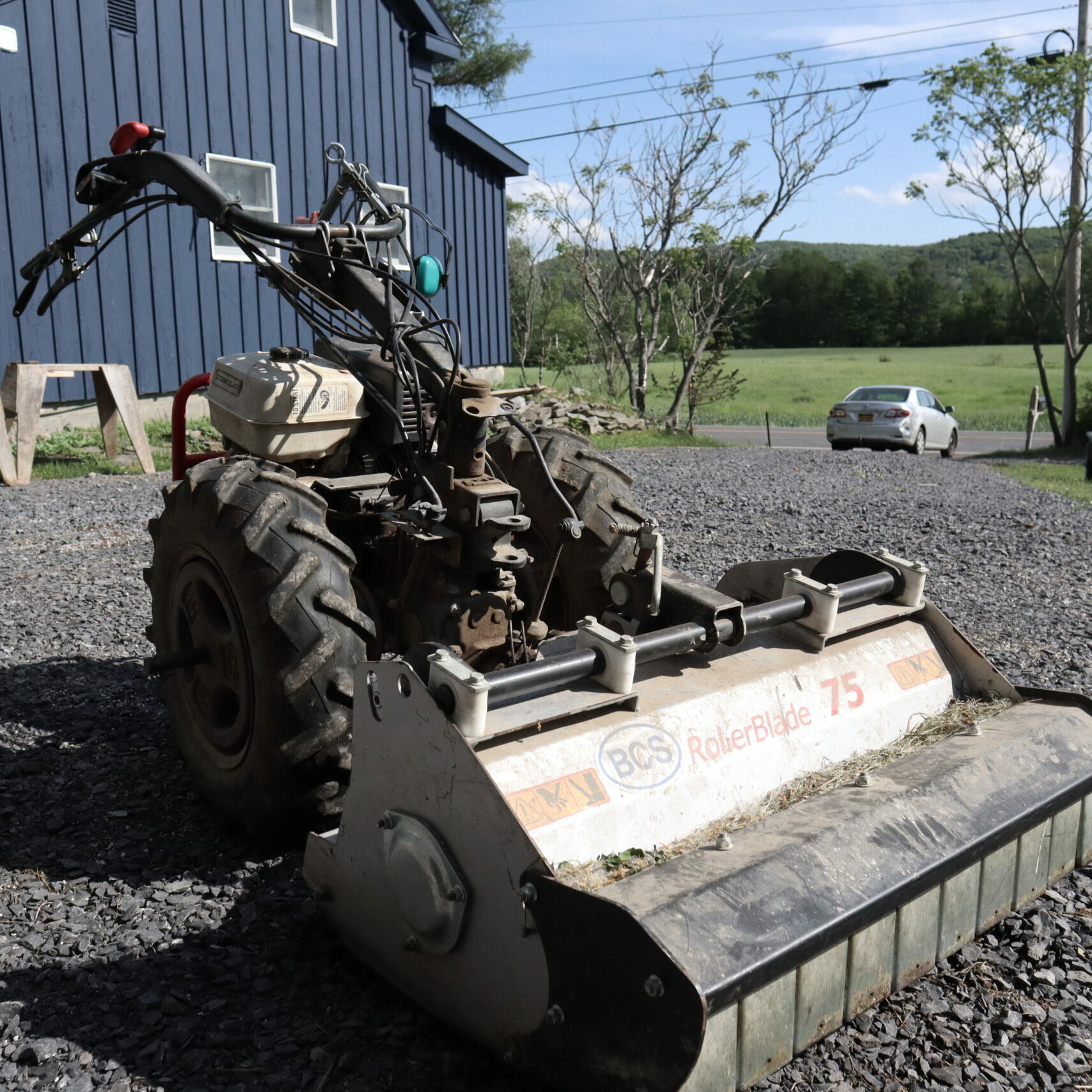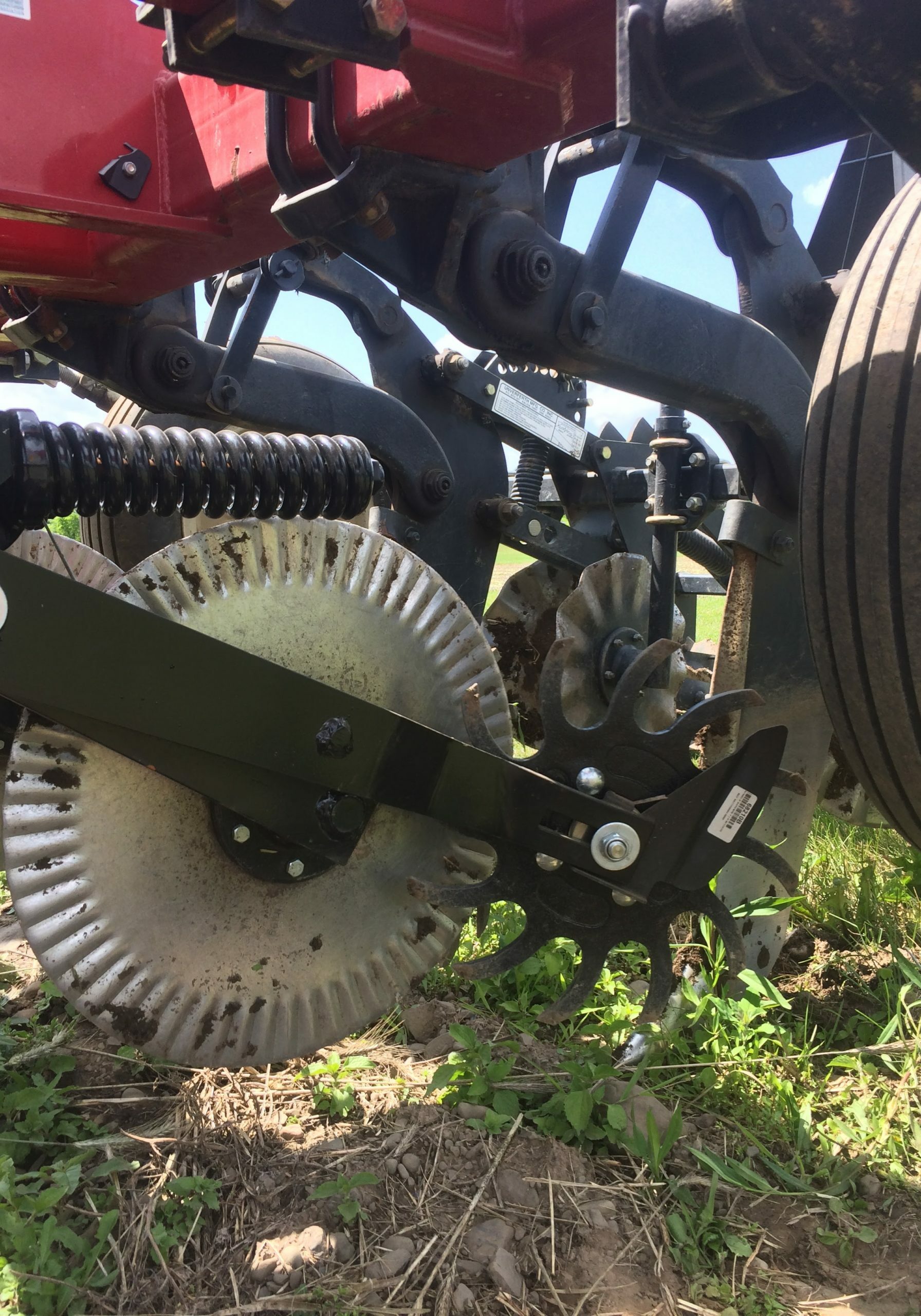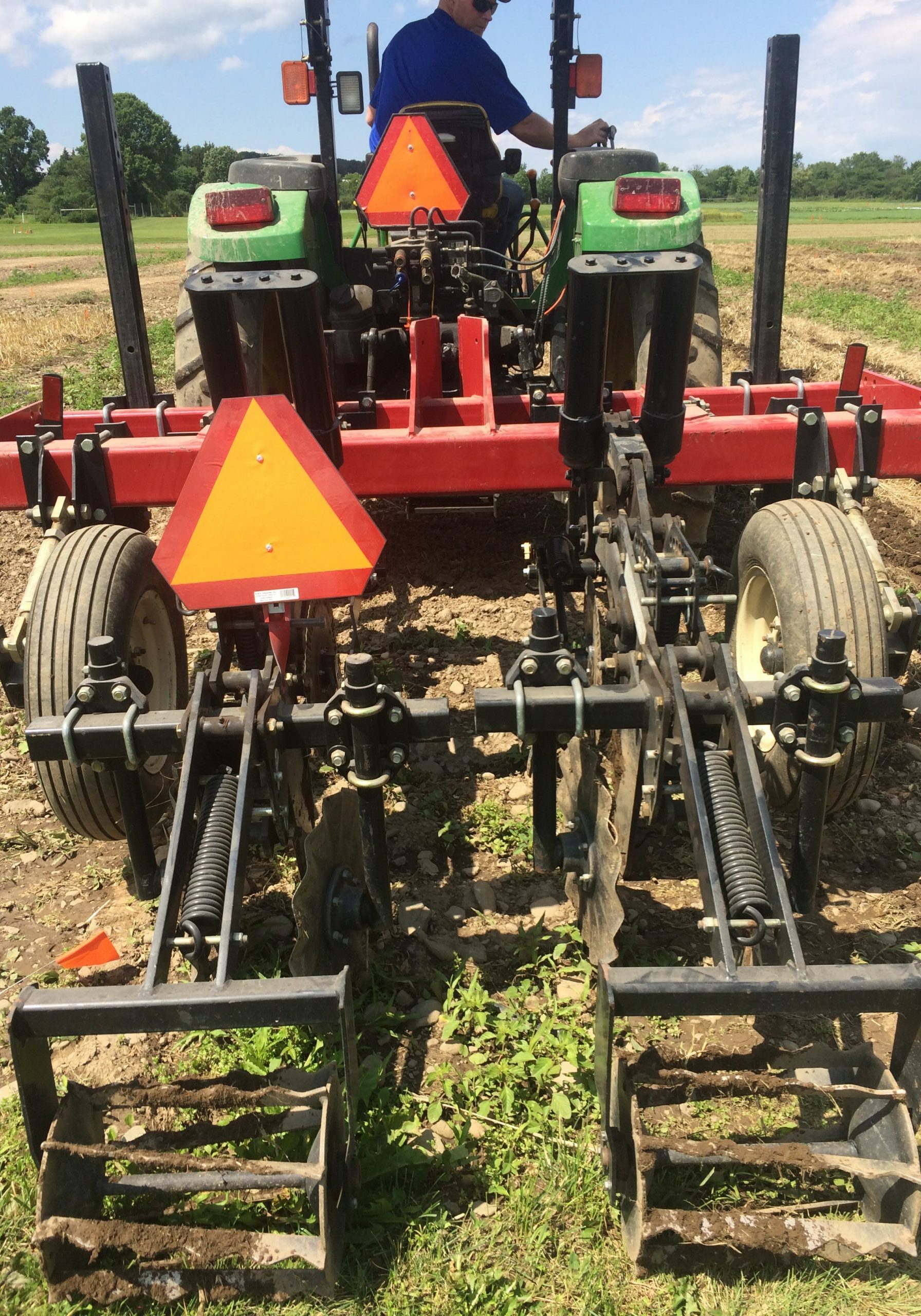Home » Projects » Reduced Tillage in Vegetables » Strip Tillage
Strip, or zone, tillage is a reduced tillage practice that targets soil disturbance to the crop planting zone. Call it a tillage compromise, where it can balance some of the soil benefits of no-till with the advantages of tillage for preparing the seed bed. Strip tillage creates a narrow tilled planting zone, alleviating compaction, warming soils, and burying residue and weeds. By leaving the between-row areas undisturbed, it can retain surface residue, maintain soil structure, and reduce erosion. Years of work by Cornell researchers, extension, and Northeast growers in mid-size to large scale conventional vegetables show that strip tillage can offer clear advantages to conventional tillage. These farmers often cite the labor and time savings along with the soil-improving benefits, like improved tilth, deeper crop rooting, and better drainage.
The Reduced Tillage project has worked to advance successful strip tillage systems for vegetables, including small farms and organic production methods, that integrate cover crops to provide nitrogen, add organic matter, and protect and build healthy soils. This work includes conducting extensive field trials of different cover crop mixtures and management practices and facilitating on-farm demonstrations in partnership with farmer collaborators. You can learn more about strip tillage and strategies to incorporate on the farm here.
Strip Tillage is a System
Strip tillage is a system that goes beyond the tillage tool. It requires planning in a rotation to match cash crops and cover crops, developing methods for cover crop termination and/or management, and either acquiring or modifying tools to work for crop production in moderate to high residue conditions. It requires a management plan that gives new considerations to residue management, soil nutrient availability, and weeds, especially in organically managed systems, These systems are best adapted for transplanted crops and large seeded crops that don't require a fine seed bed for establishment.
Strip Tillage Resources
To Tarp, to Mulch or to Do Both: That was the Question
We share on-farm research results from a collaboration with Nook and Cranny Farm (Brooktondale, NY), a small, diversified organic operation that has been working to fine tune a strip-till system for their potatoes. They experimented with using tarps to improve cover crop termination, increase weed suppression, enhance yields, and minimize labor.
Read more in the Spring 2022 issue of Small Farms Quarterly or watch a summary of the project on the Cornell Small Farms YouTube Page.
Watch our webinar series, which details reducing tillage in permanent beds, equipment required to implement strip tillage, and how to cultivate in reduced tillage. You can find them on our Webinar Page.
Mulch For Organic Vegetables—Grown in Place
We shared some early results from our trials in the context of the growing amount of research and farmer innovation on using winter hardy cover crops to grow a mulch in-place.
Read more in the Summer 2017 issue of the Small Farms Quarterly
Tillage Tools and Equipment
Stacking tillage tools can save time for field prep and reduce labor and fuel needs.
Tractor-based strip tillage equipment combines multiple tools to prepare the planting zone in one pass. Systems are often designed to combine primary tillage with a finishing unit for seedbed preparation, loosening soil in a ~12” zone. This equipment can include:
- Coulter for cutting residue
- Row cleaners for raking residue aside
- Shank for deep ripping, lifting soil, alleviating compaction in the planting row
- Wavy coulters or hilling discs to fill the ripped slot (open slots dry out quickly) and build up the planting zone
- Cultipacker wheels or rolling baskets for breaking clods and firming soil for planting
The depth of operation is dependent on soil conditions. Deep shanks are typically setup first to rip the soil just below compacted zones and break up pans (plow, disc, rototiller). Generally, these units require 4WD and 30-40 HP per shank. After a few years, shallow strip tillage tools, which requires less horsepower, may be sufficient.
Watch Anu Rangarajan, director of the SFP program and RT project leader, lay out the basics of the deep zone tillage method.


Smaller scale, light duty tractor-based equipment can be built to have lower horsepower requirements and allow for more flexibility for different crops.
Farmers are acquiring and modifying their own tools based on their scale, resources and needs. We have trialed using a Keyline plow combined with a custom-built finishing unit (hilling discs and rolling basket). These shanks run deep in the planting zone and are relatively easy to remove or adjust for different crop row spacings - we have used for both double row or single row plantings (e.g. cucurbits). Walk-behind tractor tools can be used in small scale applications where tractor-based operations are not an option or appropriate.




Cover Crops and Strip Till
Overwintering cover crops can be combined with strip tillage to bring more soil health benefits.
There has been a lot of interest in growing cover crops as a mulch that is managed in-place for summer vegetables. Cereal rye can be planted in fall and have high biomass potential in spring prior to mechanical termination (flail mowing). It can also tie up soil nitrogen for heavy feeding vegetables and the residue can cause trouble without the appropriate tools, especially as weeds escape. Winter hardy legume cover crops, like hairy vetch, can provide a valuable source of nitrogen but can also be more difficult to terminate mechanically.
Our project has trialed different cereal rye and legume mixtures and management strategies to learn how to manage weeds, residue and nitrogen for successful strip till with organic management practices.
Anu Rangarajan explains how to integrate cover crops and strip tillage into vegetable systems.


Photo Gallery













